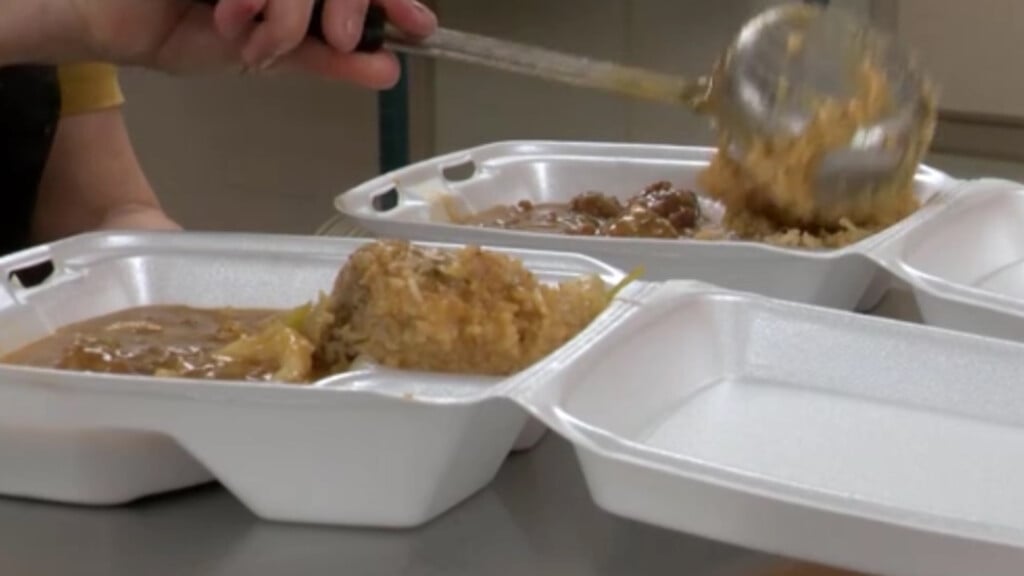Hurricane Florence: How to prepare for the “monster” storm
Hurricane Florence is expected to pummel the East Coast later this week with catastrophic flooding and damaging winds, most likely taking direct aim at the Carolinas up through Virginia. With mandatory evacuations already issued for parts of three states, millions of Americans are preparing for what could become one of the most damaging hurricanes to hit the Eastern Seaboard in decades.
Florence could be the strongest storm to hit North Carolina since Hazel in 1954, which packed winds of 130 mph (209 kph). That Category 4 storm destroyed 15,000 buildings and killed 19 people in North Carolina. In the six decades since then, many thousands more people have moved to the coast.
North Carolina Governor Roy Cooper warned in a news conference Tuesday that Florence could be a once-in-a-lifetime type of storm.
“This is storm is a monster,” Cooper said. “Even if you’ve ridden out storms before, this one is different. Don’t bet your life on riding out a monster.”
The massive storm is forecast to make landfall along a stretch of coastline already saturated by rising seas and then meander Thursday, Friday and Saturday, inundating several states with life-threatening floods. Seven-day rainfall totals are forecast to reach 10 to 20 inches over much of North Carolina and Virginia, and even 30 inches in some places.
Mandatory evacuations have already been ordered for North Carolina’s Outer Banks and low-lying coastal areas of South Carolina and Virginia.
CBS News rounded up some emergency preparedness tips for people and pets as well as a supplies checklist before Hurricane Florence arrives.
Supplies checklist
Ahead of Florence and other potentially devastating storms this hurricane season, the Red Cross recommends having the following supplies on hand:
- Water: At least a 3-day supply; one gallon per person per day
- Food: At least a 3-day supply of non-perishable, easy-to-prepare food
- Flashlight
- Battery-powered or hand-crank radio (NOAA Weather Radio, if possible)
- Extra batteries
- First aid kit
- Medications (7-day supply) and medical items (hearing aids with extra batteries, glasses, contact lenses, syringes, cane)
- Multi-purpose tool
- Copies of personal documents (insurance policies, birth certificates, lease or deed to home)
- Sanitation and personal hygiene items
- Emergency blanket
- Insect repellent and sunscreens
- Baby supplies (bottles, formula, baby food, diapers)
- Rain gear
How to prepare for the storm
The Red Cross advises:
- Listen to NOAA Weather Radio for critical information from the National Weather Service
- If your area is told to evacuate, evacuate
- Check your disaster supplies and replace or restock as needed
- Fill your car’s gas tank
- Turn the refrigerator and freezer in the coldest setting and keep them closed as much as possible so food will last longer if power goes out
- Bring any outdoor furniture inside
- Close your windows, doors and hurricane shutters
- Board up all windows and doors with plywood
- Learn about your community’s hurricane response plan
Safety tips for pets
The National Humane Society also put together a disaster plan for your pets.
- Make sure that cats and dogs are wearing collars and identification tags that are up to date
- Put your cellphone number on your pet’s tag (or a relative/friend’s number in case you need to evacuate)
- Find a safe place to stay head of time
- Never assume you will be allowed to bring your pet to an emergency shelter — check with local officials in advance to find out about pet-friendly shelters
- Consider a kennel or veterinarian’s office or contact hotels and motels
- Bring your pet with you if you evacuate
- Stock enough food and water for each pet for at least five days
- Don’t forget to bring your pet’s medications and a sturdy leash or carrier
© 2018 CBS Interactive Inc. All Rights Reserved.





Leave a Reply